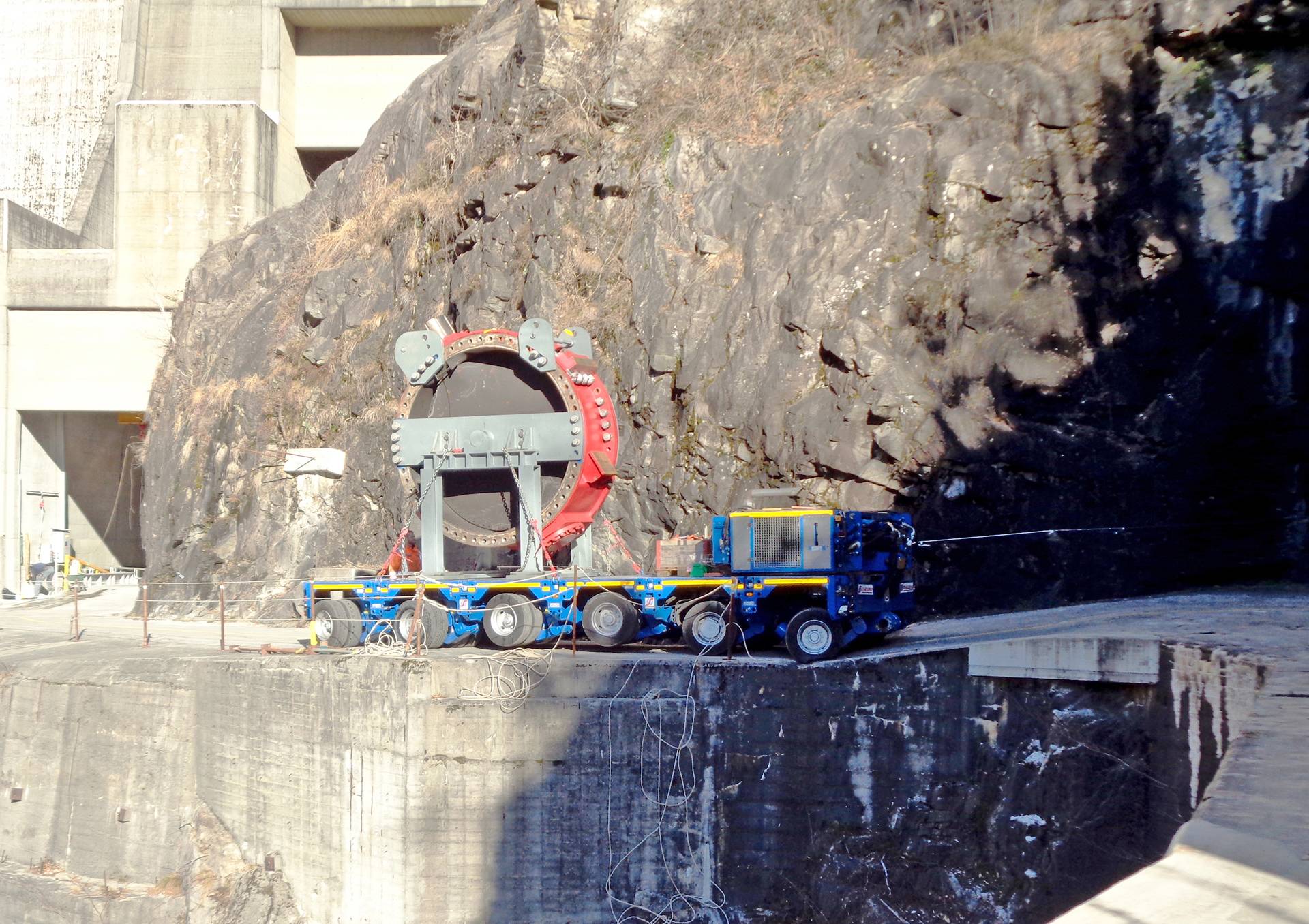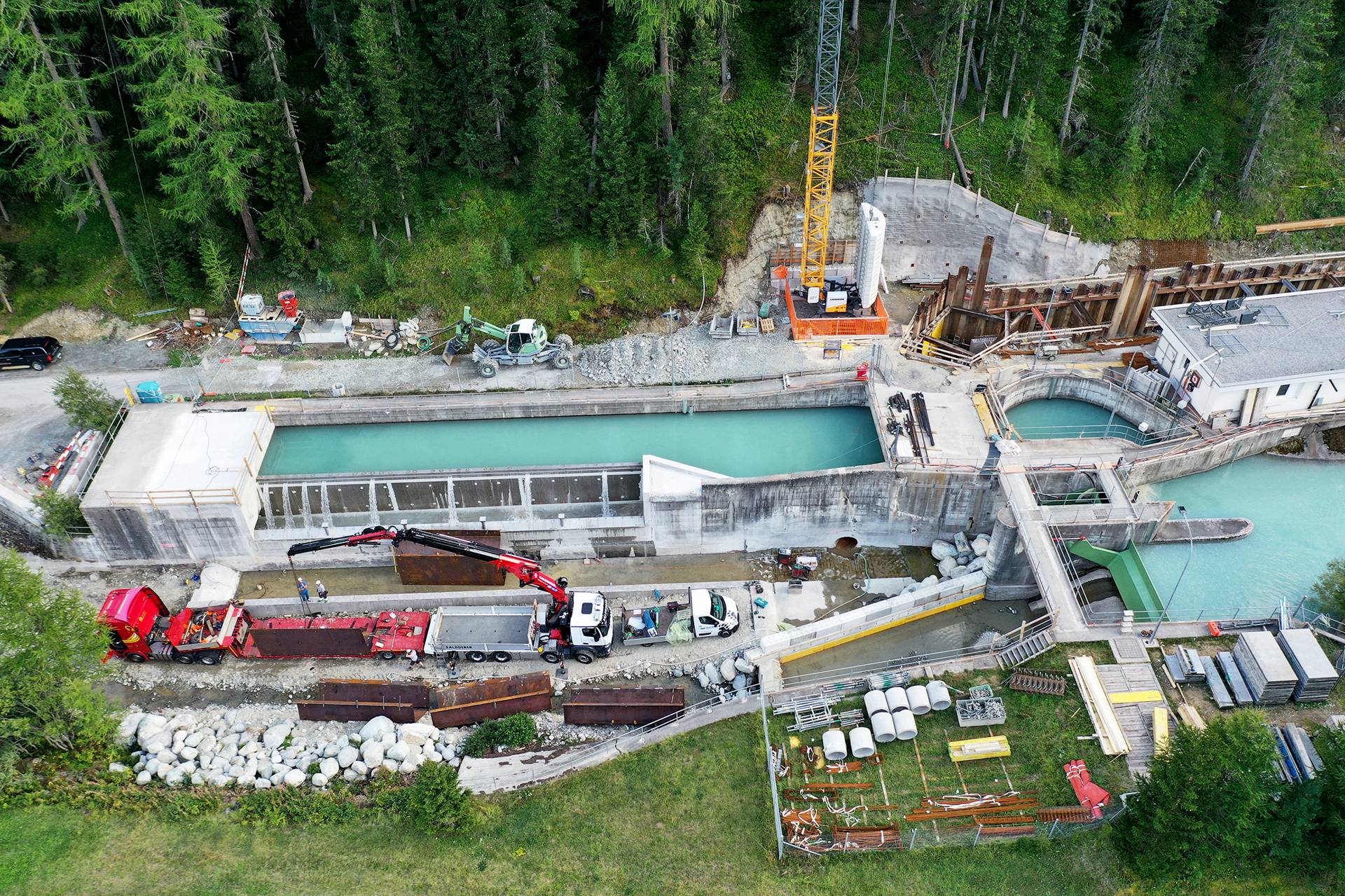Hydropower from the dessert5 min read
Lesedauer: 4 MinutenThe Dubai Supreme Council of Energy formulated a strategic objective to diversify the Emirates energy mix and to enhance sustainability through a program of clean energy development.
This plan envisages increasing the clean energy share of the generation mix to 7 percent by 2020, 25 percent by 2030, and 75 percent by 2050. To achieve this ambitious target the Dubai Energy and Water Authority (DEWA) decided to increase the power generation contribution from sources like photovoltaic solar and wind. But, in addition, to also create the necessary energy storage capacity required to balance these volatile renewable energy sources. Further investigation determined that in regions with hot ambient conditions, pumped storage technology is superior to battery technology. Batteries are sensitive to heat and, as a result, a utility-scale battery storage facility would require a tremendous amount of electricity for cooling purposes.
Near the community of Hatta, approximately 140 km southeast of Dubai in the Hajar Mountains on the northern border with the Sultanate of Oman, there is an existing reservoir created by the Sadd Hatta Al Awwal Dam. Together with the French consultant EDF (Électricité de France), DEWA developed a concept to create a new upper reservoir at a distance of 1.3 km and 150 m higher than the existing lower reservoir. The plan involved constructing two small dams with heights of 65 m and 30 m close to an old meander in the Hajar Mountains. A 1,300 m long tunnel with some 7 m in diameter will connect the two reservoirs. With a capacity of approximately 200 m3/s and partially lined with steel, the tunnel is a key feature of the new Hatta Pumped Storage Power Plant
THE SOLUTION
For this challenging and unique project on the Arabian Peninsula, ANDRITZ Hydro formed a consortium with the civil works partners STRABAG and ÖZKAR. With support from the French consultant Artelia, the consortium was able to further improve the initial concept for the power plant and present a technically and commercially optimized offer to DEWA. This put the ANDRITZ Hydro-STRABAG-ÖZKAR consortium in a prime position once the tender opened. Following a series of rounds of technical and commercial clarification – during which all the specific details and benefits of the offer as presented were discussed with DEWA and the employer’s engineer – the consortium was awarded the contract to realize this prestigious project on an EPC basis. This contract award took place in July 2019. The final concept is based on a shaft-type powerhouse close to the existing reservoir. It will host two pump turbine and motor-generator units with a capacity of 125 MW each. Capable of producing a total net power of 250 MW over a six-hour generation cycle in turbine mode and a 7.4-hour storage cycle in pumping mode, the project provides an overall storage capacity of some 1,500 MWh. Due to the relatively limited reservoir capacities, the available head will vary significantly, changing between 175 and 125 m during the charge-discharge cycle. To overcome this large head variation while keeping the units running at a high efficiency over the complete cycle, both pump turbine units are equipped with double-fed asynchronous motor-generators. They allow the units to operate at variable speed. ANDRITZ Hydro is one of the few global suppliers to have reference projects and appropriate expertise in the design, manufacture and installation of such specific and challenging technology.
THE SCOPE OF SUPPLY
STRABAG is acting as the consortium leader and joined forces with the Turkish ÖZKAR Group to execute the civil engineering elements of the project. STRABAG is a global leader in the execution of large infrastructure projects while ÖZKAR fields outstanding references in Rolled Compacted Concrete (RCC) Dams, the technology chosen for the Hatta Project. ANDRITZ Hydro will be the consortium partner responsible for the entire electro- and hydro-mechanical equipment for the Hatta Pumped Storage Power Plant. ANDRITZ Hydro’s scope of works to be engineered, supplied, installed and commissioned consists of two Francis-type pump turbines with double-fed generators and auxiliary systems including excitation, automation, as well as the control and protection systems. Furthermore, ANDRITZ Hydro will also supply the main power transformers, GIS switchyard and some 9 km of high voltage cables to connect the new power plant to the national grid. In relation to the waterways, ANDRITZ Hydro will engineer, supply and install all gates and trash racks along with approximately 320 m of penstock steel lining. The company will also supply the main inlet valves at both the high and low pressure sides of the turbines. Before initiating manufacture of the units, ANDRITZ Hydro will confirm the guaranteed characteristics of the turbine through a detailed model test. Testing is to be conducted in one of ANDRITZ Hydro’s own laboratories.
LIGHTHOUSE PROJECT
Considered a lighthouse project for our customer DEWA as well as other utilities and electricity producers across the whole region, this contract is a very important milestone for ANDRITZ Hydro and its consortium partners. Upon successful completion of Hatta it is very likely that additional projects of a similar nature will be developed in the region to further improve the share of clean energy in the generation mix.
THE ARABIAN DESERT
The Arabian Desert has a subtropical, hot desert climate and is an extension of the Sahara Desert. Occupying most of the Arabian Peninsula with an area of 2,330,000 km2, it is the fifth largest desert in the world. At its center is Ar-Rub’al-Khali (The Empty Quarter), one of the largest continuous bodies of sand in the world.
AL-HAJAR MOUNTAINS
“Hajar” means “Stone” or “Rock”, so “Al-Hajar” would be defined as “The Stone” or “The Rock” – The Rocky Mountains of Arabia. The Al-Hajar Mountains in northeastern Oman and the eastern United Arab Emirates are the highest mountain range in the eastern Arabian Peninsula. They separate the low coastal plain of Oman from the high desert plateau and lie 50–100 km inland from the Gulf of Oman. Measuring up to 50 km wide, the mountains begin in the Musandam Peninsula in the north, and extend about 440 km to Ras Al-Hadd in the east.
Share:


